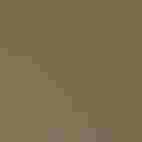Yellow-rumped Warbler
At a Glance
Flashing its trademark yellow rump patch as it flies away, calling check for confirmation, this is one of our best-known warblers. While most of its relatives migrate to the tropics in fall, the Yellow-rump, able to live on berries, commonly remains as far north as New England and Seattle; it is the main winter warbler in North America. Included in this species are two different-looking forms, the eastern 'Myrtle' Warbler and western 'Audubon's' Warbler.
All bird guide text and rangemaps adapted from Lives of North American Birds by Kenn Kaufman© 1996, used by permission of Houghton Mifflin Harcourt Publishing Company. All rights reserved.
Category
Perching Birds, Wood Warblers
IUCN Status
Least Concern
Habitat
Arroyos and Canyons, Coasts and Shorelines, Desert and Arid Habitats, Forests and Woodlands, High Mountains, Saltwater Wetlands, Shrublands, Savannas, and Thickets, Tundra and Boreal Habitats, Urban and Suburban Habitats
Region
Alaska and The North, California, Eastern Canada, Florida, Great Lakes, Mid Atlantic, New England, Northwest, Plains, Rocky Mountains, Southeast, Southwest, Texas, Western Canada
Behavior
Direct Flight, Flitter
Population
170.000.000
Range & Identification
Migration & Range Maps
Migrates earlier in spring and later in fall than other warblers. The "Myrtle" form, mostly eastern, also winters commonly in streamside trees near coast in Pacific states. "Audubon's" is a very rare stray in the East.
Description
5-6" (13-15 cm). Both types have bright yellow rump patch (obvious as bird flies away), white spots in tail, small yellow patch at side of chest. Eastern "Myrtle Warbler" has white throat (may be dull buff in some young birds) wrapping up behind well-defined dark cheek patch. Western "Audubon's Warbler" has yellow throat, plainer face. In both forms, pattern is brightest on spring males, dullest on young females in fall and winter.
Size
About the size of a Sparrow
Color
Black, Blue, Brown, Gray, White, Yellow
Wing Shape
Rounded
Tail Shape
Notched, Square-tipped
Songs and Calls
A colorless buzzy warble; a sharp chek!
Call Pattern
Flat, Undulating
Call Type
Chirp/Chip, Trill, Whistle
Habitat
Conifer forests. In winter, varied; open woods, brush, thickets, gardens, even beaches. In the North, breeds in coniferous and mixed forests, preferring more open stands and edges in pine, fir, spruce, aspen; also spruce-tamarack bogs. In West, breeds up to 12,000' in mountain conifer forests. In winter, common in many lowland habitats, especially coastal bayberry thickets in East and streamside woods in West.
Sign up for Audubon's newsletter to learn more about birds like the Yellow-rumped Warbler
Behavior
Eggs
4-5, sometimes only 3. Creamy white with brown and gray marks. Incubated usually by female, 12-13 days. Occasionally the male will cover the eggs.
Young
Both parents feed nestlings. Young leave nest after 10-12 days, can fly short distances 2-3 days later. First brood probably fed mostly by male after fledging. Normally 2 broods per year.
Feeding Behavior
Versatile in its feeding. Searches among twigs and leaves, and will hover while taking insects from foliage. Often flies out to catch flying insects. Will forage on ground, and will cling to tree trunks and branches. Males tend to forage higher than females during the breeding season. In winter, usually forages in flocks.
Diet
Insects and berries. Feeds on caterpillars, wasps, grasshoppers, gnats, aphids, beetles, and many other insects; also spiders. Feeds in winter on berries of bayberry, juniper, wax myrtle, poison ivy, and others. Can winter farther north than most warblers because it can digest the wax in berry coatings.
Nesting
During courtship, male accompanies female everywhere, fluffs his side feathers, raises his wings and his colorful crown feathers, calls and flutters. Nest: Placed 4-50' above ground, usually on horizontal branch away from trunk of conifer, sometimes in deciduous tree; or sometimes in fork where branch meets trunk. Nest (built by female) is open cup made of bark fibers, weeds, twigs, roots; lined with hair and feathers in such a way as to curve over and partly cover the eggs.
Conservation
Conservation Status
Still abundant and widespread.
Climate Threats Facing the Yellow-rumped Warbler
Choose a temperature scenario below to see which threats will affect this species as warming increases. The same climate change-driven threats that put birds at risk will affect other wildlife and people, too.












